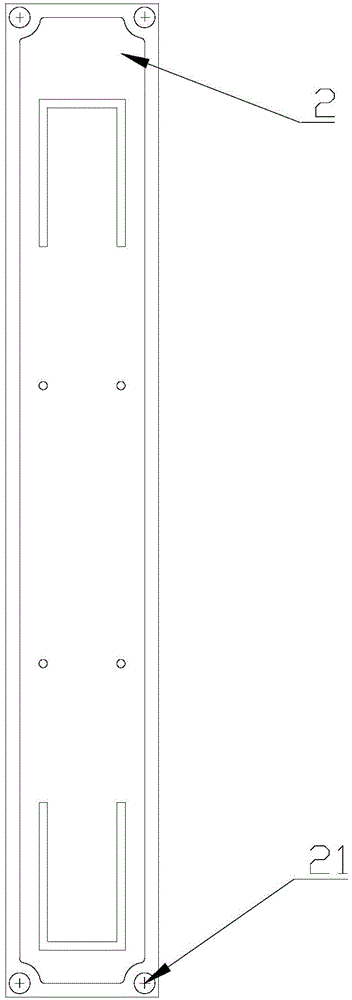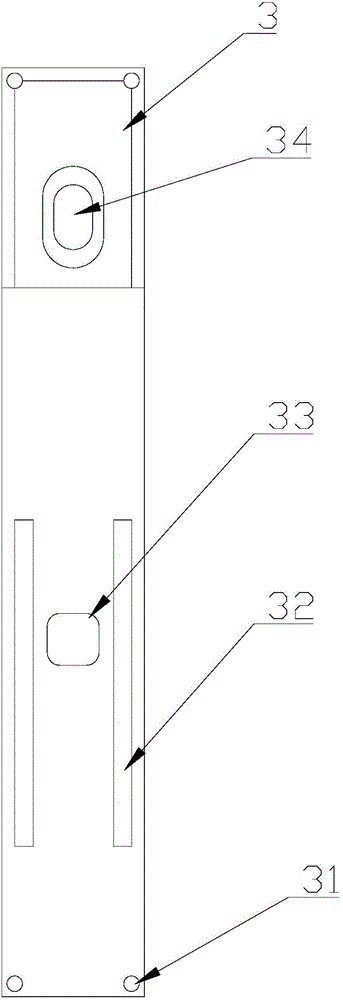Fast testing card for organophosphorus and carbamate pesticide residues
A carbamate and pesticide residue technology, applied in the field of bioengineering, can solve problems such as poor anti-interference ability, long detection time, and insufficient response, and achieve strong anti-interference ability, short detection time, and avoid artificial folding.
- Summary
- Abstract
- Description
- Claims
- Application Information
AI Technical Summary
Problems solved by technology
Method used
Image
Examples
Embodiment 1
[0043] Preferred embodiment 1 of the present invention: paste and fix the climbing film 14 that is fixed with indophenol acetate on the bottom plate 11, the size of the climbing film 14 is 10 mm long × 5 mm wide, and the amount fixed with indophenol acetate is 0.3 mg; One end of the sample film 14 is pasted with a color-developing pad 15 and a water-absorbing pad 16. The material of the color-developing pad 15 is synthetic cellulose paper, and the size is 7 mm long x 5 mm wide. The water-absorbing pad 16 is 20 mm long x 5 mm wide. The membrane 13 and the enzyme pad 12 on which the cholinesterase is fixed are pasted successively. The size of the diaphragm 13 is 3 mm in length x 5 mm in width, the size of the enzyme pad 12 is 20 mm in length x 5 mm in width, and the amount of immobilized cholinesterase contained therein is 0.5 U. The speed test paper 1 is placed in the groove of the plastic lower cover 2, and the base plate 11 is PVC base plate paper.
[0044] The steps to dete...
Embodiment 2
[0047] Preferred embodiment 2 of the present invention: the amount of immobilized cholinesterase contained in the enzyme pad 12 is 2 U, the amount of immobilized indophenol acetate contained in the climbing membrane 14 is 3.0 mg, and the material of the diaphragm 13 is filter paper.
[0048] The steps to detect pesticide residues are as follows:
[0049] Step 1. Select pure water for the blank sample solution, place the detector horizontally, add 0.1mL pure water to the sample injection hole 34, react at 37°C for 7 minutes, and observe the color development results. Dark blue is observed from the observation hole 33, indicating that There are no pesticide residues in the sample solution.
[0050] Step 2. Prepare a simulated sample. The simulated sample is a pakchoi sample spiked with trichlorfon to 0.2mg / kg. The processing steps of the vegetable simulated sample are: take 5g fresh weight vegetable sample and cut it into pieces about 1cm×1cm in size. Put it in a sample cup, th...
PUM
 Login to View More
Login to View More Abstract
Description
Claims
Application Information
 Login to View More
Login to View More - R&D
- Intellectual Property
- Life Sciences
- Materials
- Tech Scout
- Unparalleled Data Quality
- Higher Quality Content
- 60% Fewer Hallucinations
Browse by: Latest US Patents, China's latest patents, Technical Efficacy Thesaurus, Application Domain, Technology Topic, Popular Technical Reports.
© 2025 PatSnap. All rights reserved.Legal|Privacy policy|Modern Slavery Act Transparency Statement|Sitemap|About US| Contact US: help@patsnap.com



